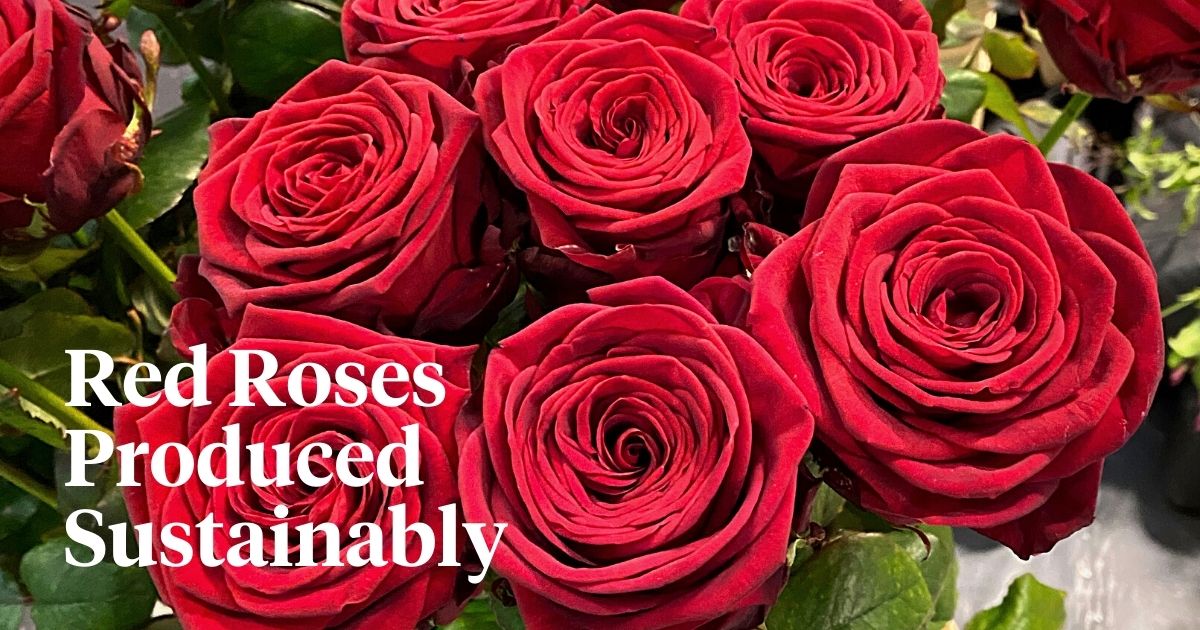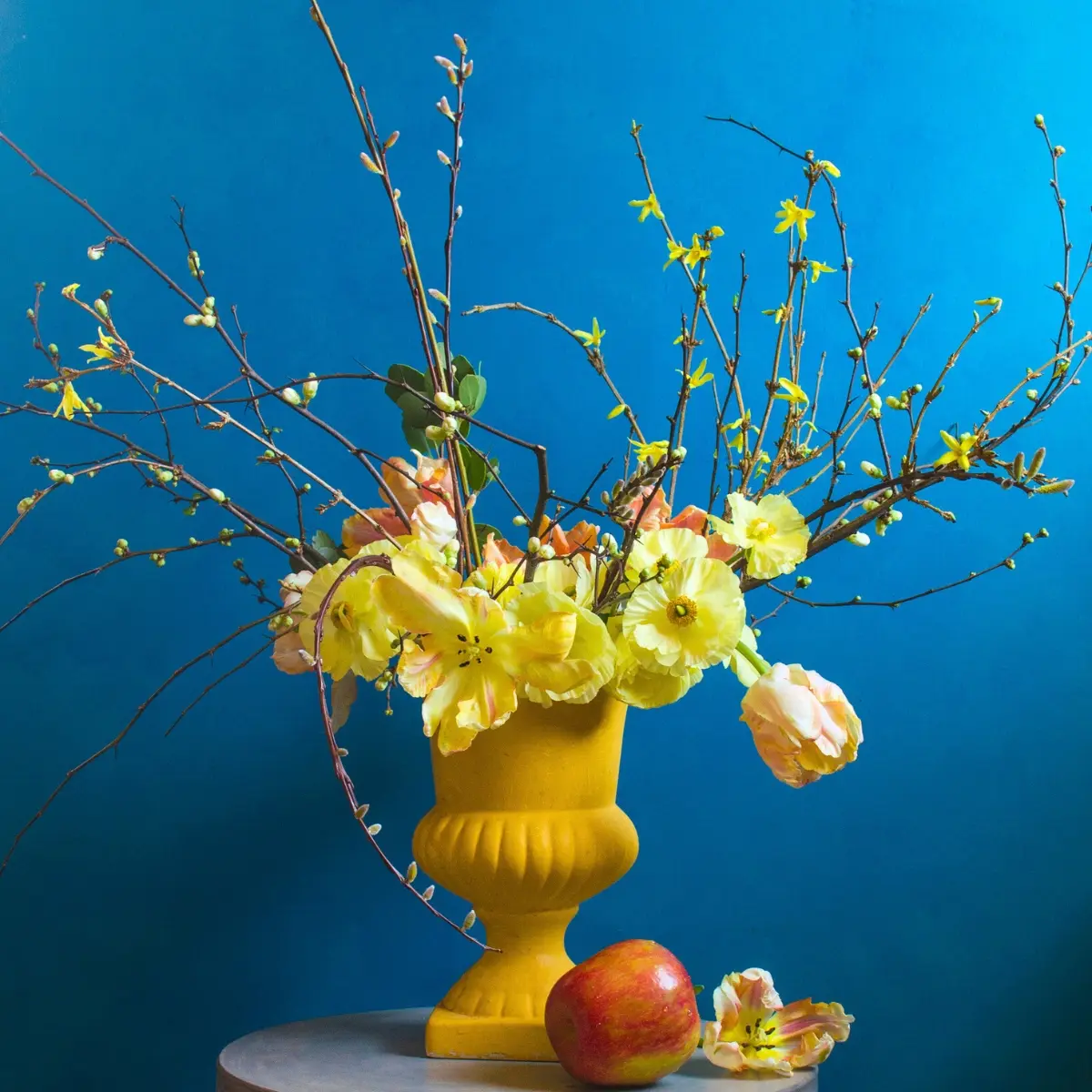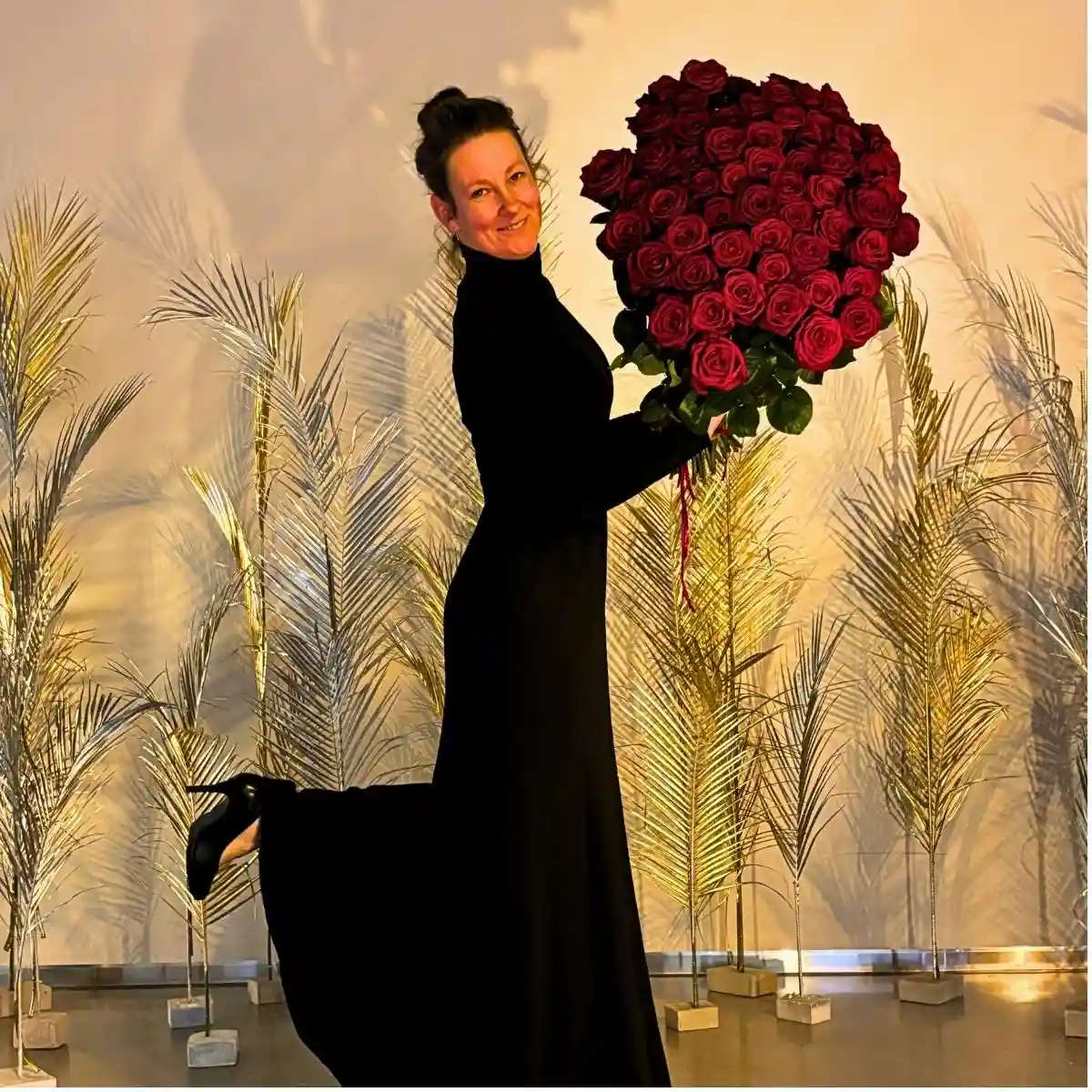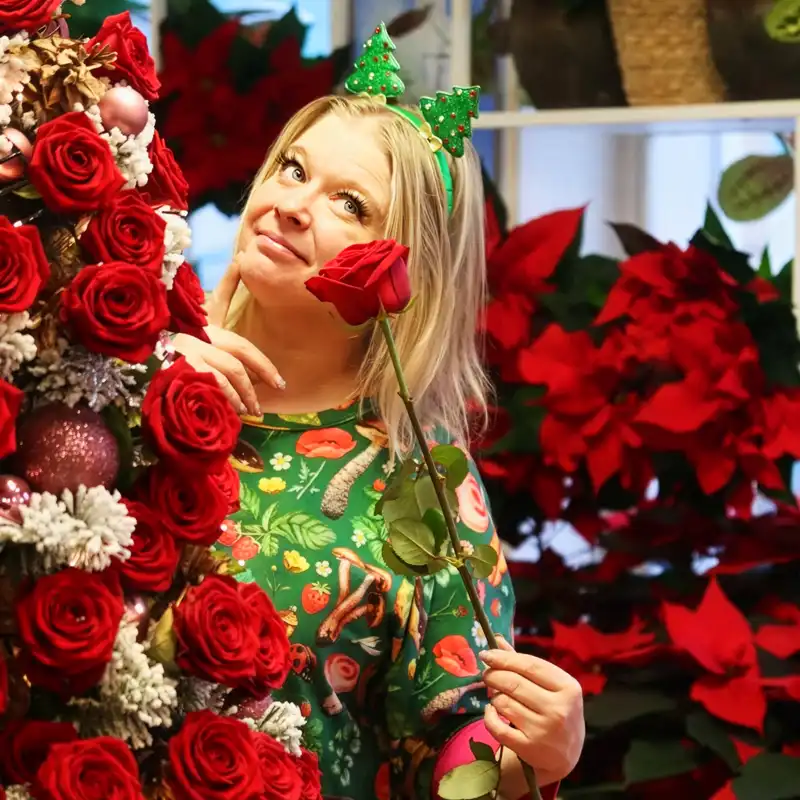When it comes to floriculture sustainability, Porta Nova, the renowned grower of the highly acclaimed Rose Red Naomi never miscalculates its steps. The Waddinxveen-based rose grower always has something different to offer in the sustainable cultivation of exquisite roses. Simply put, Porta Nova hardly falters whenever called upon to put into use the latest cutting-edge technologies; if only that means that its roses will be of the highest quality, and produced with the greatest sustainability consciousness.
That notion is continuously showcased in recent days as Porta Nova’s quest for the perfect Rose Red Naomi - the grower's leading product known to symbolize love and passion, continues to be even more paramount. The grower's green consciousness efforts just keep getting a notch higher as it deploys an array of the latest innovative approaches that put sustainability, environmental responsibility, and the least carbon footprint at the very core of all operations in its flower production processes.
Cultivating the Rose Red Naomi Sustainably and with Eco-Awareness
Rose Red Naomi is a definite favorite for many people, regardless of the season or occasion. It has a perfect red color that features a smooth, velvety shade. This is the only red rose with an extremely large flower head and a subtle engaging scent that red rose aficionados would definitely love.

Photo by @portanoveroses
This red rose is so lovely, it seems to pamper one’s senses. Plus, with all its ideal qualities; from its long stems to exceptional transportability, and a superb vase life, the rose just has it all. All these qualities, collectively, make a flower that one would easily fall in love with.
For the rose’s cultivation, simply put, Porta Nova - constantly looking for the perfect rose-growing conditions - is redefining the concept of sustainability; going the extra mile to ensure a green conscience. After all, when it comes to rose-growing, dedication to sustainability is deeply ingrained in this grower's very ethos. Knowing the importance of preserving the planet, the company applies various innovative systems to minimize its environmental impacts.
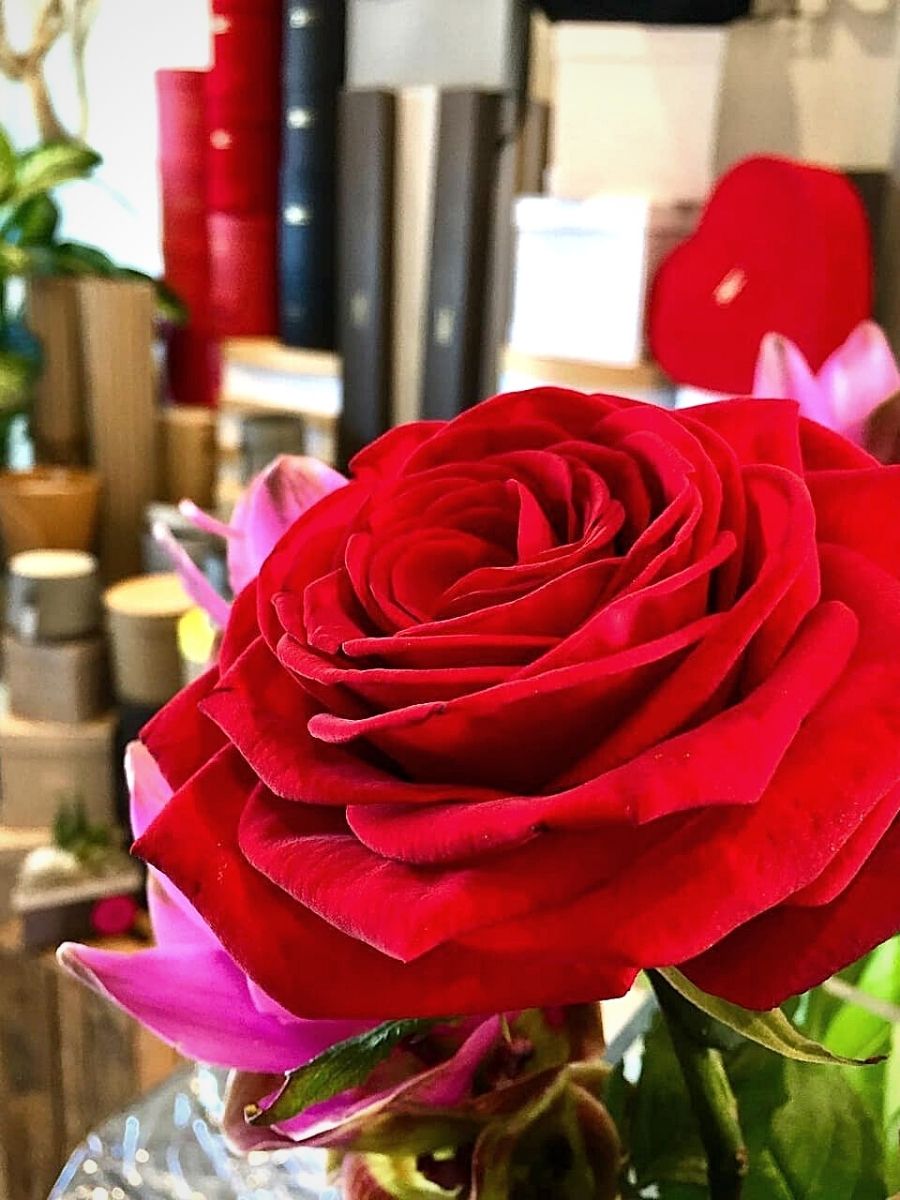
Photo by @portanovaroses
Porta Nova:
“We (at Porta Nova) strive to grow the best red roses in the world with a minimal impact on the environment. We believe that many small changes can lead to big results. Constant improvement has enabled us to grow the world’s most beautiful Rose Red Naomi roses. To ensure a good future for our company and kids, we know we need a healthy earth too. That’s why, besides improving the quality of our roses, we’re also focused on growing them in a sustainable way. It’s not just about the flowers; it’s about taking care of the planet too.”

Photo by @portanovaroses
In this context, the grower has, over the past eight years, invested more than €38 million in different cutting-edge technologies intended to achieve sustainable cultivation of its roses. The goal, according to Porta Nova, is to grow Rose Red Naomi with the lowest carbon footprint in the industry. And key to this approach is the option to grow gasless and use green energy, a feat that the grower has managed to achieve 100% since November 2023.
An Array of Sustainability-Focused, Green Conscious Technologies
Porta Nova’s great investment in green and sustainable technologies to drive its breeding and production processes is, without a doubt, an enviable feat. The fact that the rose nursery has already achieved a significant part of its intended goal, makes it even more remarkable.
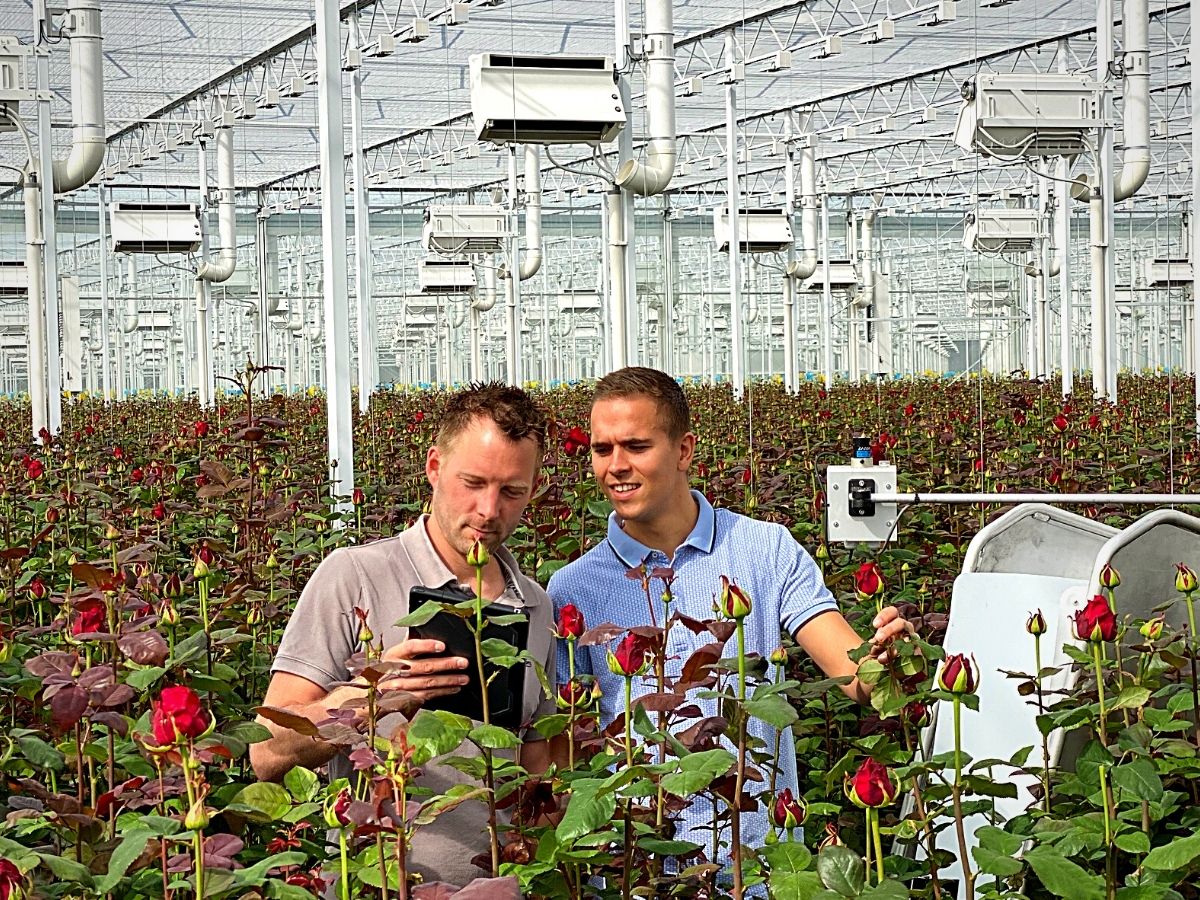
So, how did they accomplish these achievements? Well, here you go.
The Climator System
Among Porta Nova’s innovative approaches is the application of the Climator System, a revolutionary technology that allows the grower to capture and store heat from the summer 100 meters underground, and utilize this stored hot water to warm the greenhouses during the winter. This efficient and sustainable model guarantees that the Porta Nova reduces the need for conventional heating methods and minimizes energy consumption.
The water is pumped through a heat exchanger located inside a Green Room. It then releases this heat to the climators bringing the greenhouse to exactly the perfect temperatures for the roses. The cooled water then goes back underground and in summer, the cold water is pumped back up to help the climators blow cool air into the greenhouse, creating a stable climate that results in roses of a stable quality all year round.
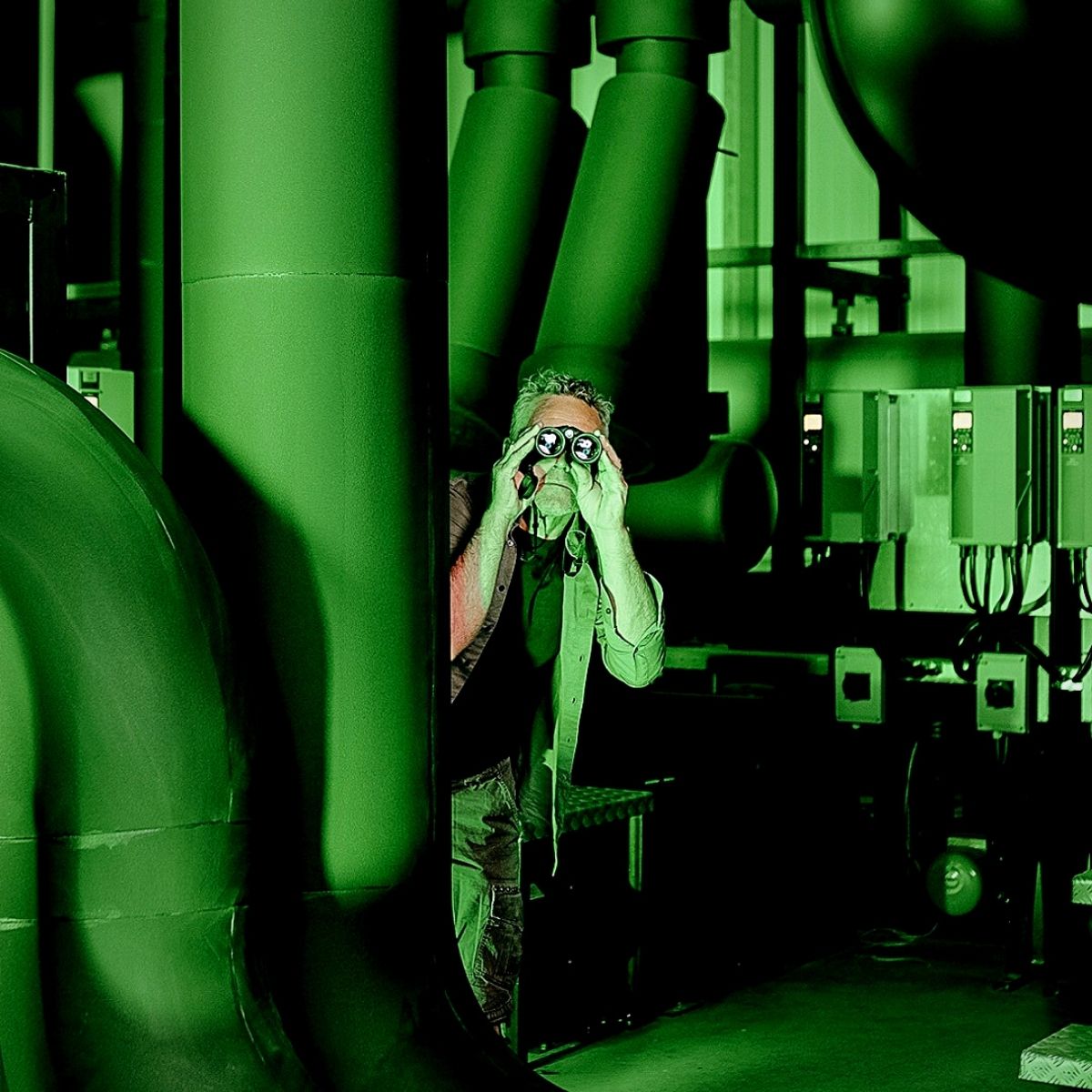
Photo by @portanovaroses
Essentially, the Green Room is the space that is fully in line with Porta Nova’s binder to a low carbon footprint and its desire to grow roses without using gas. It is the Green Room where the nursery gets the power for its climators, which naturally heat the nursery in winter and cool it down in summer.
Noteworthy, the water in the heat exchanger system always stays in its closed circuit and is used solely as an energy carrier. The heated or cooled water is only transferred to the climators in the greenhouse, hence the balance of the groundwater is never affected in any way.
Given that through this system the nursery often gathers more energy than it needs, its residual heat can be supplied and used to heat several homes within its locality, meaning in addition to sustainably growing quality red roses, Porta Nova also helps its neighborhood to be green-conscious.
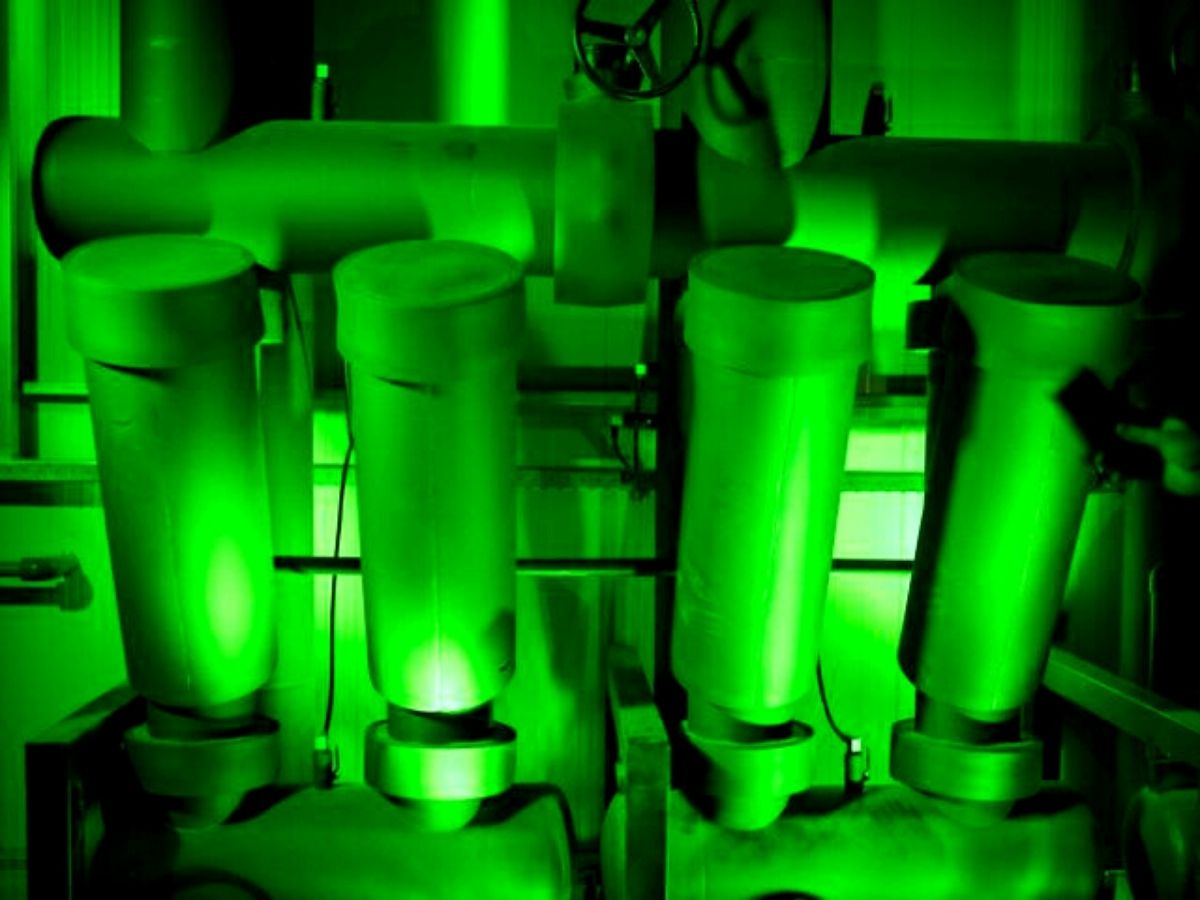
Transition to Green Energy
The breeding company’s sustainability efforts extend to energy resources. Some years back, the rose-growing company invested €5 million in a private power line, connecting it to the nearest power station, in a strategic decision that enables it to practically use green energy instead of fossil fuels.
This line allows the grower to purchase electricity instead of solely relying on gas for heating and lighting. It also provides an added advantage of flexibility to choose daily between gas and electricity. In addition, the company has the option to select 100% wind energy for its process.
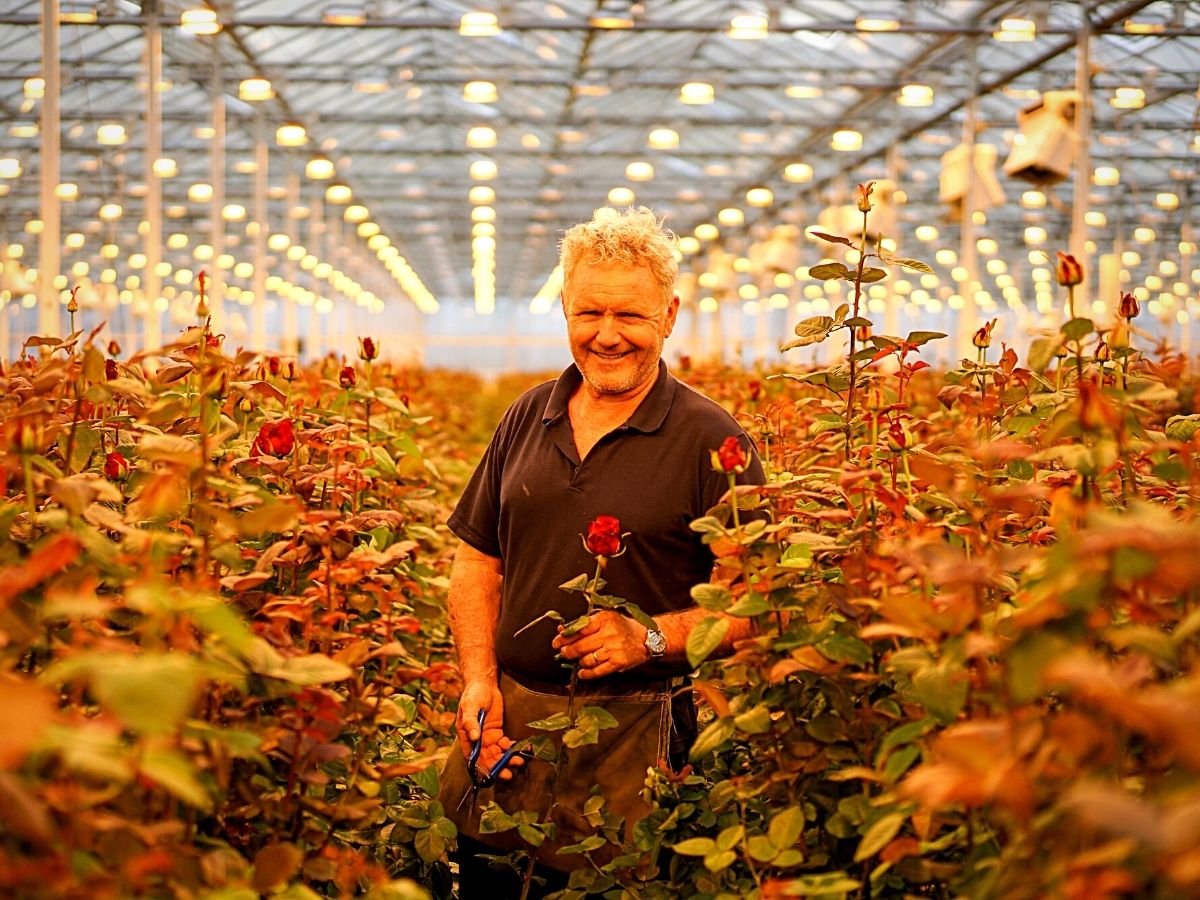
The subsequent step saw the grower transition to LED lighting for more optimal light levels and increased energy savings. In 2022, Porta Nova started installing LEDs and completed the full transition in 2023. Thus, with the specialized LED light and the additional heat from the climators, the nursery now saves 40% on both lighting costs and energy consumption, ensuring that even the smallest details contribute to its green conscience.
This model perfectly fits into the winter months in which Porta Nova is always ready for growing top-quality Rose Red Naomi with 100% full LED lights. The company already researched and developed LED lighting strategies with numerous relevant experts for many years, looking for the ultimate ‘light recipe’ for its roses' cultivation. With LED light, one can determine exactly which colors/radiation to use. And together with the developers, the grower found the ultimate spectrum for the rose.
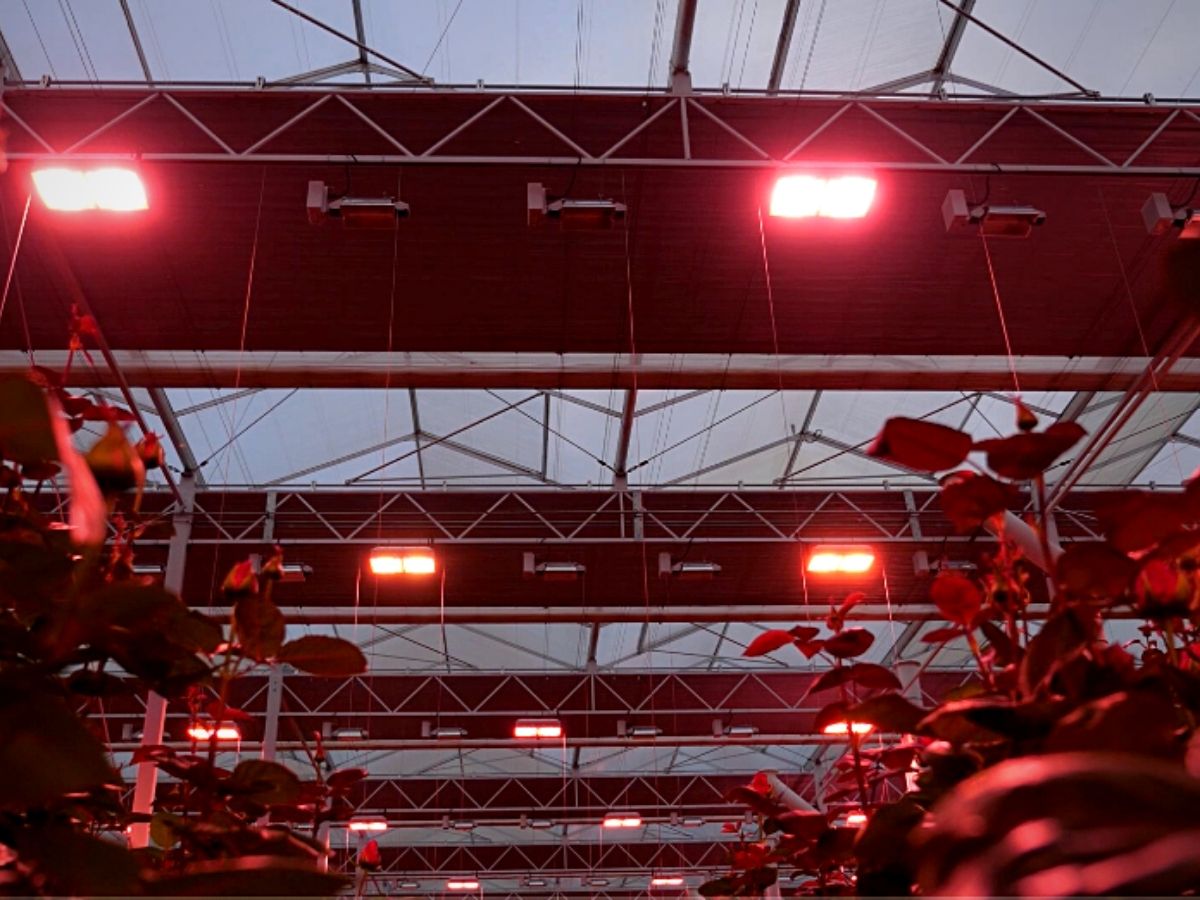
As a result of this development, in addition to sustainability and cost aspects, the rose nursery expects that its roses’ production and quality will be more stable throughout the year. And that the flowers will, continuously, be presented with the perfect light ranges.
Porta Nova:
“Thanks to our new 100% LED light and our unique Climator System in which we store heat from the summer underground and use it for heating in the winter, we have been able to grow top-quality roses [throughtout] during winter.”
Together, the climators and green electricity now allow Porta Nova to grow its roses without gas. Essentially, gas produces carbon emissions, which in turn have a direct impact on the environment. This is why grower aims to grow its flowers without using it.
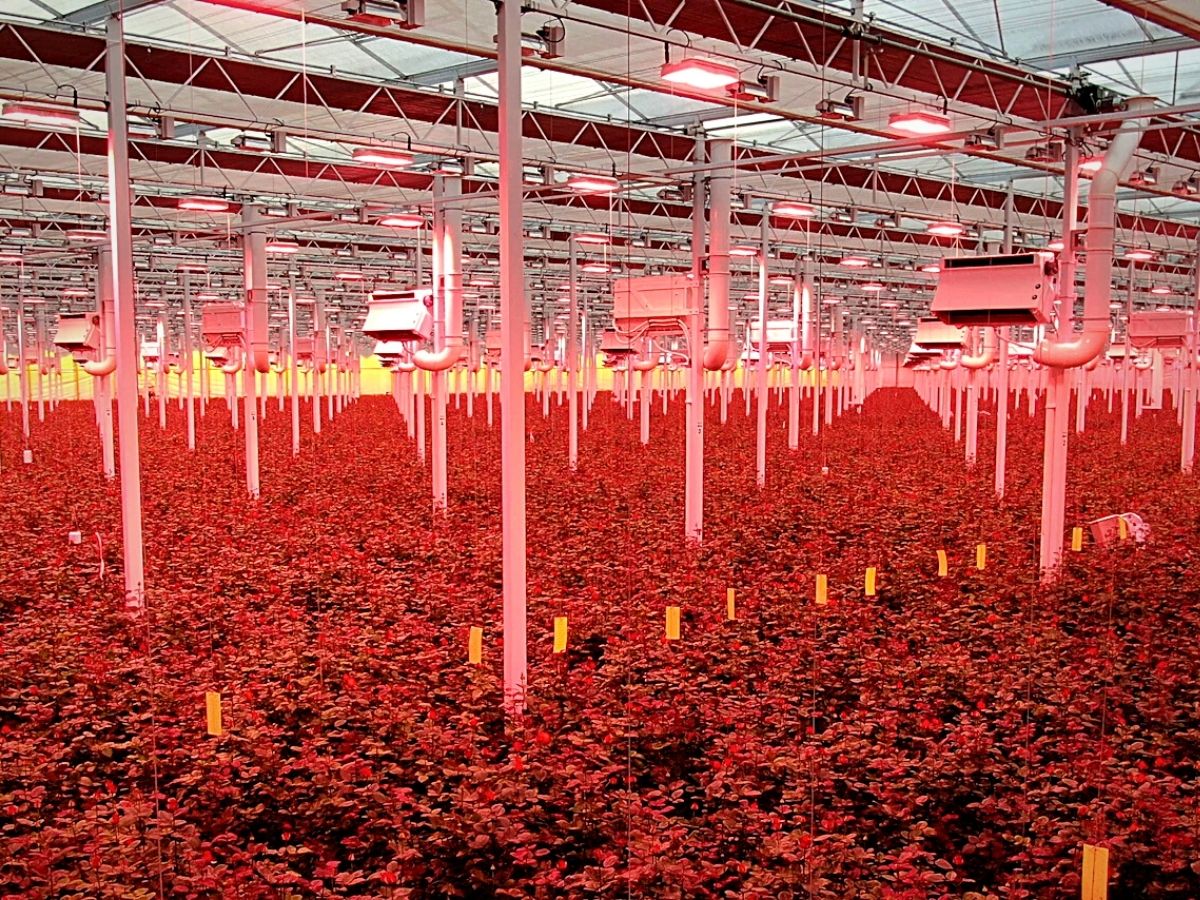
Still Aiming for a Much Greener Future
Porta Nova's sustainable journey does not end with the current achievements. As part of its ongoing commitment to the environment, the company is actively engaged in conducting a comprehensive Life Cycle Assessment (LCA) to identify areas for further enhancement.
The ongoing LCA is a comprehensive evaluation encompassing different categories to analyze and measure the environmental impact of the company’s flower production, providing an all-inclusive understanding of its operations, and identifying parts that require further sustainability improvements.
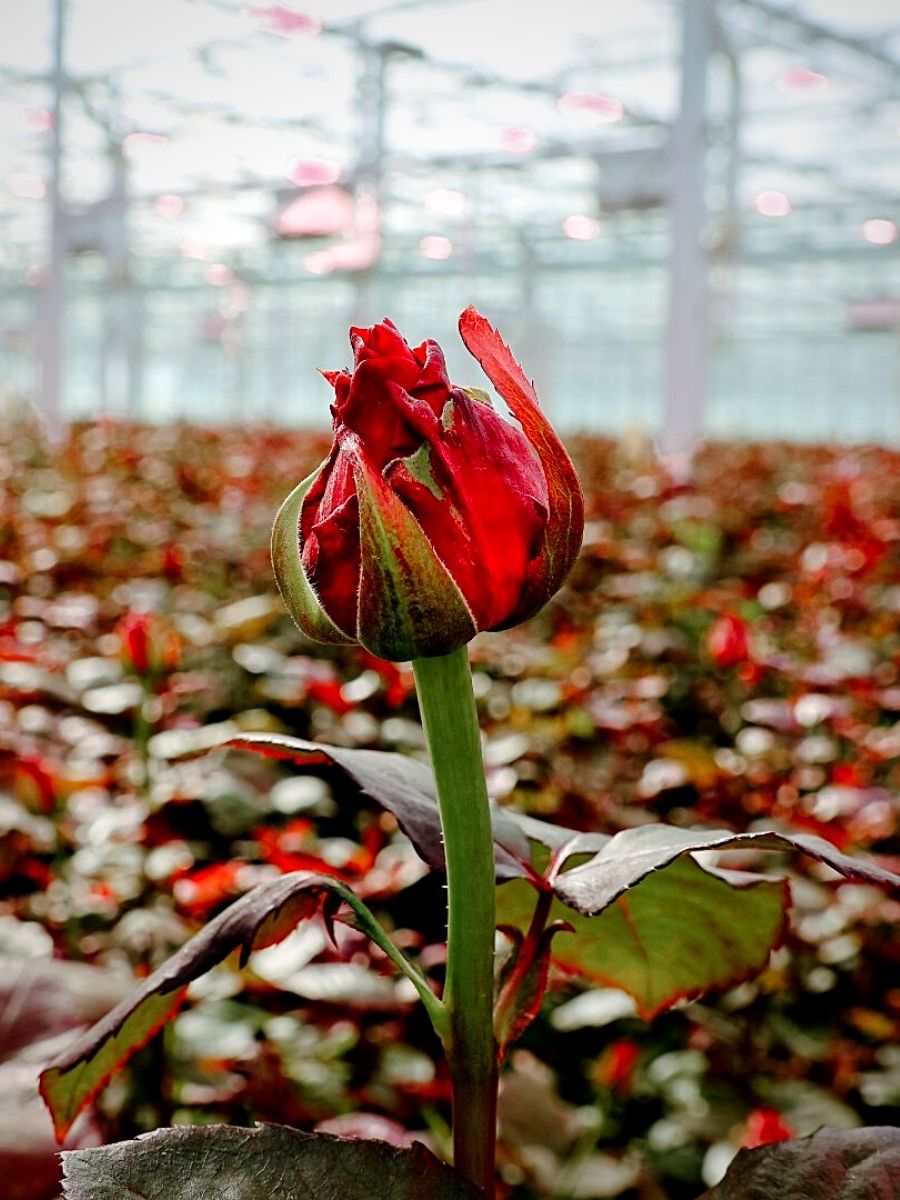
Photo by @portanovaroses
One key feature of Porta Nova's LCA is its commitment to water management. Instead of utilizing well water, the company collects rainwater from its own roofs and neighboring sources. This sustainable practice not only reduces the reliance on groundwater but also creates a localized ‘spa’ for the plants. The collected rainwater nourishes the roses, ensuring efficient and responsible water usage.
Additionally, the company employs closed fertilizing systems, which enables it to achieve 100% reuse of excess water. This approach minimizes water waste and removes the risk of harmful runoff. Nothing is, therefore, wasted or spilled inside greenhouses.

Another vital aspect is the focus on biological pest control. Porta Nova goes all-out to achieve 100% biological pest control, minimizing the use of chemical pesticides. This strategy involves using natural predators and beneficial insects to fight pests effectively while preserving the ecological balance within the cultivation environment.
Furthermore, Porta Nova recognizes that sustainability encompasses more than just reducing carbon emissions. Consequently, its LCA extends beyond carbon footprint measurements to consider other relevant ecological factors to gain comprehensive insights into its environmental performance and identify prospects for more development.

Photo by @portanovaroses
Ever-Continuous Green Conscious Efforts to Attain a ‘Greener’ Rose Red Naomi
For Porta Nova, achieving the perfect Rose Red Naomi is an ever continuing journey. And the grower is putting in place all that is required to achieve this feat. As sustainability trends continue to eveolve, and customers become even more conscious of what is required of the flower industry, the goal is to, always, keep up with the standards required. This, for the grower, is achievable thanks to the company’s significant investment in sustainability and green-conscious causes.

Photo by @portanovaroses
Buying a Rose Red Naomi bouquet, therefore, means you're contributing to a greener future!
Photos courtesy of Porta Nova. (@portanovaroses)

